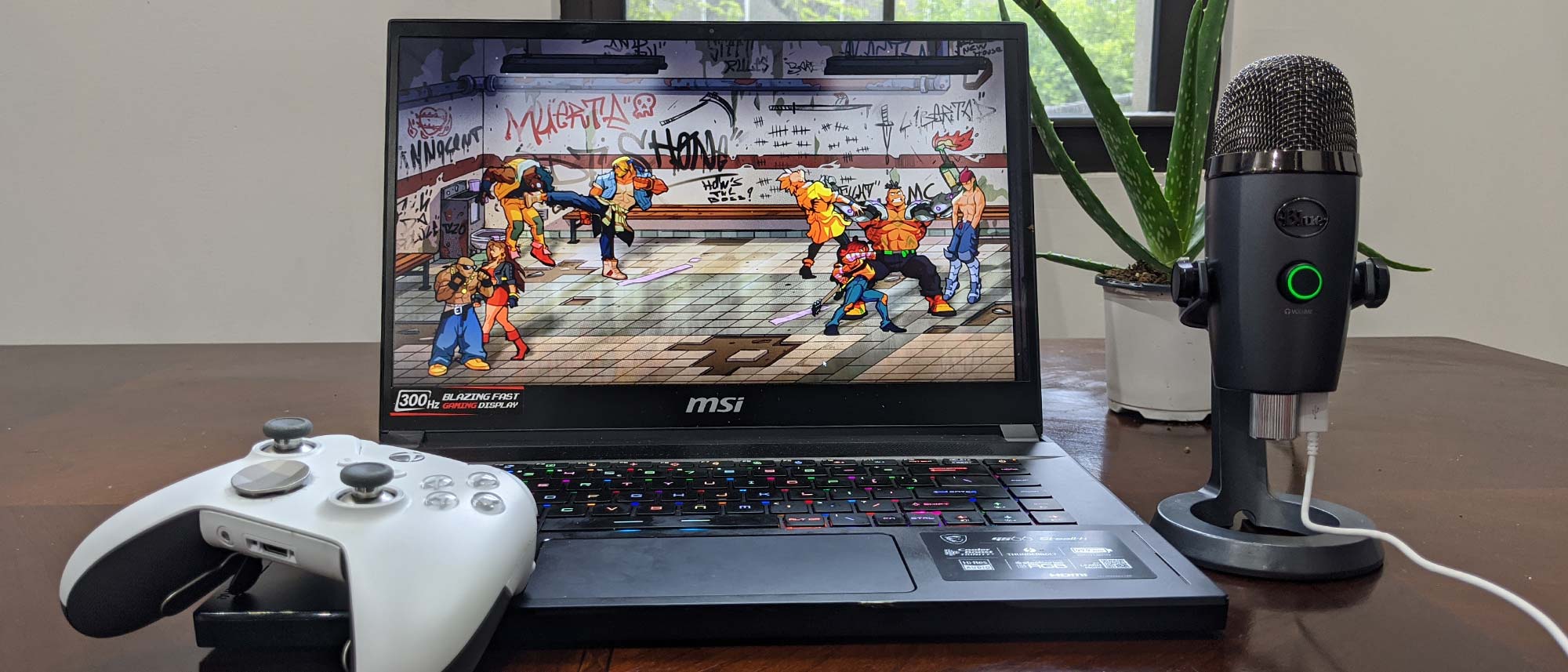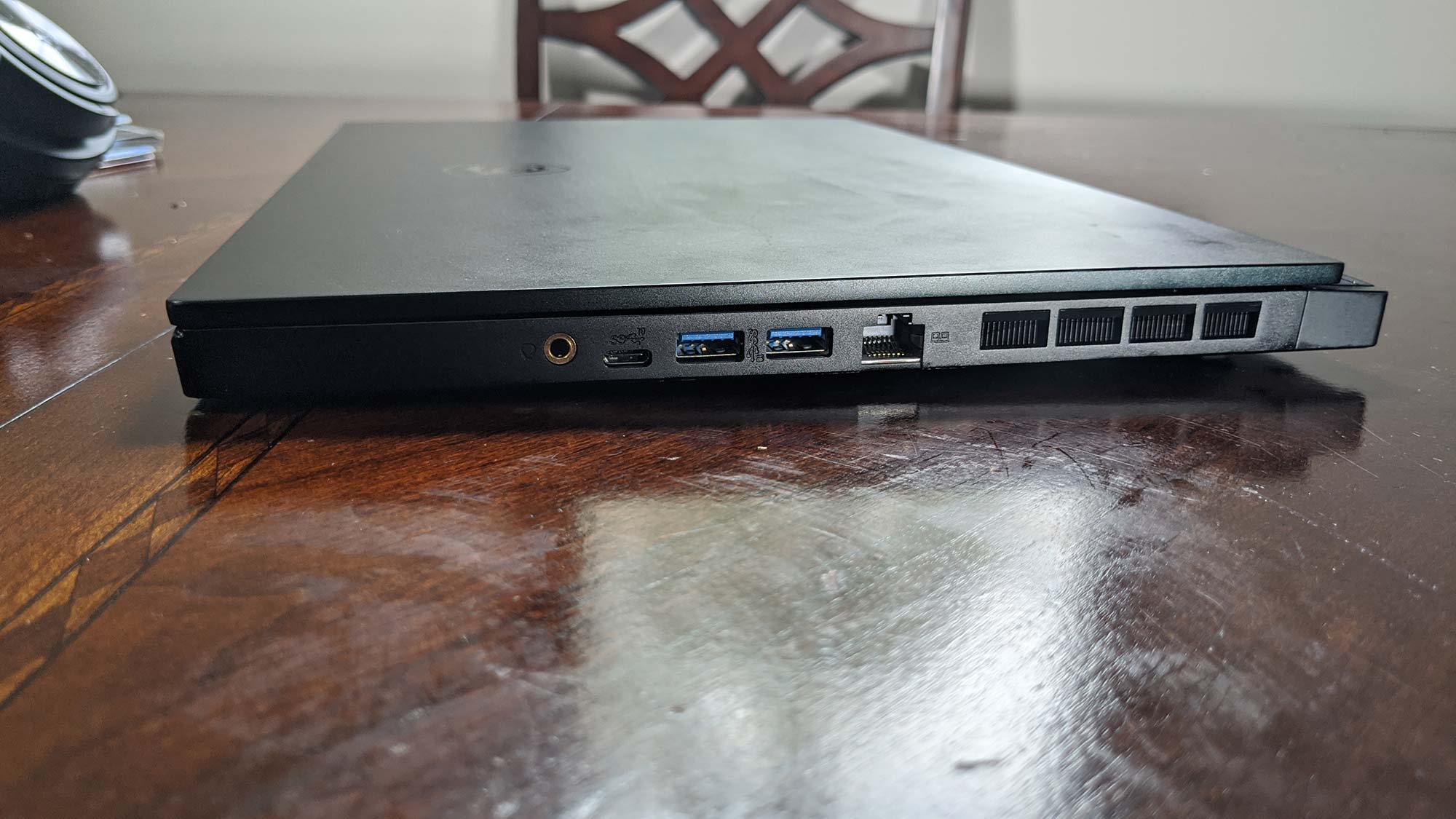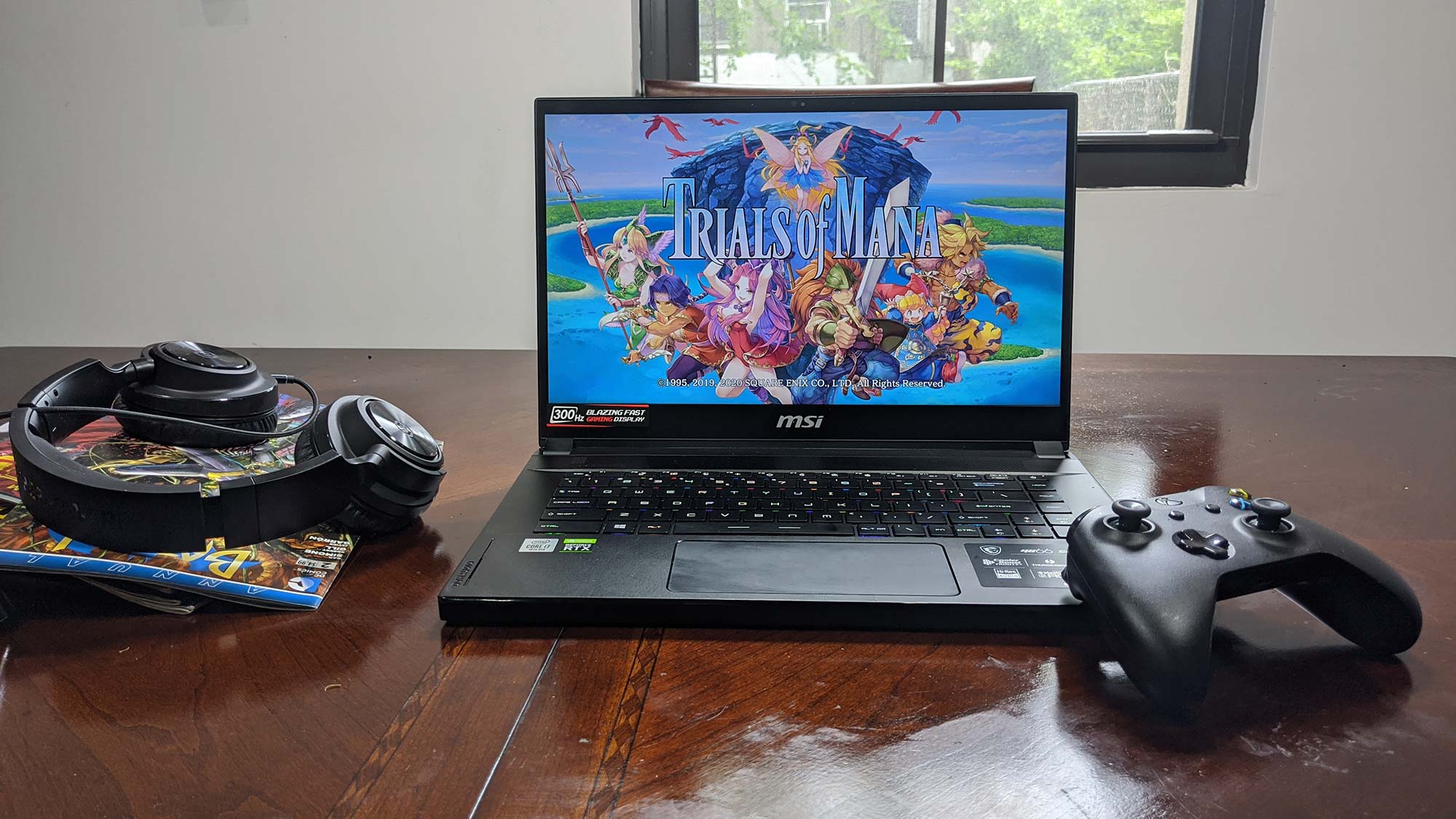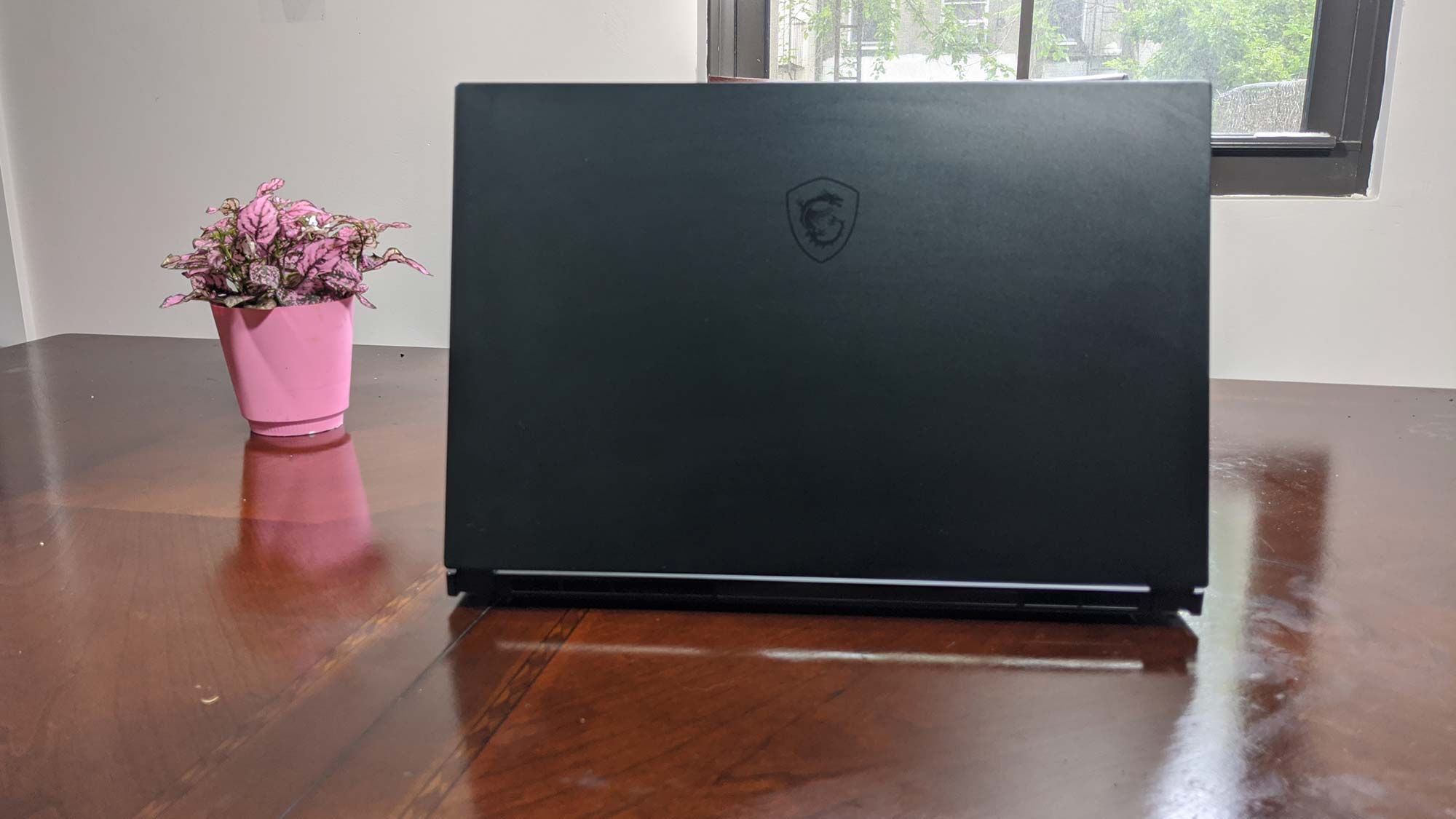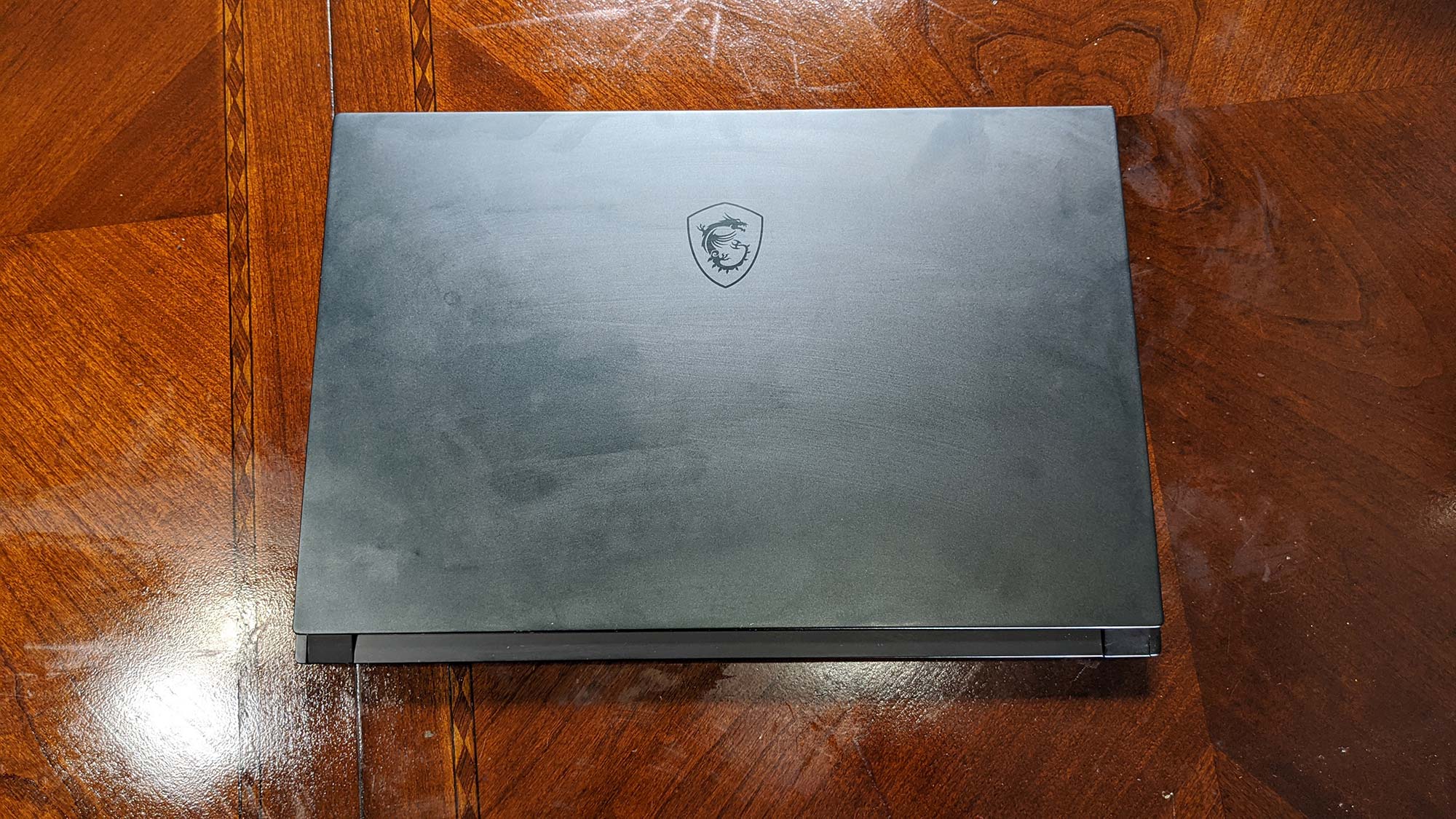Laptop Mag Verdict
The MSI GS66 Stealth gives you serious overall and gaming performance with over 6 hours of battery life in a lightweight, ultra-thin chassis.
Pros
- +
Lightweight, gorgeous chassis
- +
Powerful graphics and overall performance
- +
Great battery life for a gaming laptop
- +
Agile SSD
Cons
- -
Weak audio
- -
A bit pricey
Why you can trust Laptop Mag
When I first started reviewing thin-and-light gaming laptops, it was a game of compromises. Do you get performance at the expense of battery life or vice versa? Those days are officially over with the MSI GS66 Stealth. Priced at $2,699, the Stealth is a little expensive, but that lofty price nets you a laptop with powerful gaming and overall performance thanks to an Intel 10th Gen Comet Lake processor and an Nvidia Super Max-Q GPU. Throw in a speedy SSD and the largest battery available, and you’ve got a bonafide winner. Is this peak gaming nirvana? Not quite, but it’s definitely a step closer. It's one of the best VR-ready laptops around.
Pricing and availability
The base model Stealth costs $1,499 and features a 2.6-GHz Intel Core i7-10750H processor with 16GB of RAM, a 512GB NVMe SSD, an Intel UHD Graphics, an Nvidia GeForce RTX 2060 GPU with a 6GB of VRAM and a 15.6-inch, 1920 x 1080 display with a 144Hz refresh rate.
I had fun reviewing the $2,699 version of the laptop, which doubles the RAM, bumps the graphics card to an RTX 2080 Super Max-Q GPU with 8GB of VRAM and brings the display’s refresh rate to a wild 300Hz. The $2,999 iteration kicks it up even more with an overclockable 2.4-GHz Intel Core i9-10980HK CPU and a 1TB NVMe SSD.
Design
Always bet on black -- especially if it looks anything like the Stealth. MSI has stripped all the accent color from the design, leaving an elegant Core Black aluminum chassis. Even the dragon emblem, which is usually done in a bright color, has been toned down to a semi-gloss matte that still manages to draw the eye. The sandblasted metal invites your touch while resisting fingerprints, so feel free to give it a good rub.
You get more of that luscious onyx once you open the lid. I appreciate the raised palm rest, which matches the height of the speaker grille at the top of the deck. The keyboard sits in the resulting chasm. The pair of hinges are pretty sturdy and allow the display to lay completely flat in case you want to share your screen. Along the laptop’s undercarriage you’ll find a rather large vent and a pair of rubber feet to give the laptop some space to blow out hot air.
MSI might be known for its massive Titan laptops, but one should never sleep on the company’s dedication to slimming things down. At 4.6 pounds, the 14.2 x 9.7 x 0.7-inch Stealth is lighter than many of the other laptops in its weight class. The Asus ROG Zephyrus S GX502 (5.1 pounds, 14.2 x 9.9 x 0.7 inches) is the heaviest of the competition with the Razer Blade 15 (OLED) (4.9 pounds, 13.9 x 9.3 x 0.7 inches) and Acer Predator Triton 500 (4.8 pounds, 14.1 x 10 x 0.7 inches) sitting in the middle.
Ports
The Stealth has ports aplenty along its relatively slim sides. You’ve got a USB Gen 3.2 Type-C port on the right along with a pair of USB 3.1 Type-A ports, an Ethernet port and a headset jack. Along the left, there’s another USB 3.1 Type-A port, a Thunderbolt 3 port, a full HDMI port and an AC jack.
Sign up to receive The Snapshot, a free special dispatch from Laptop Mag, in your inbox.
Display
Matte displays can be great as they eliminate any potential glare, but there’s also a danger of washing out colors. Luckily, the Stealth’s 15.6-inch, 1920 x 1080-pixel panel doesn’t fall into that trap. Watching The Lovebirds trailer, my eyes were immediately drawn to actress Issa Rae’s plum leather jacket, which is pretty on its own, but only helped to accentuate the actress’s warm brown skin and the copper in her braids. Details were clean enough that I easily saw the hairline cracks in the windshield made from an unfortunate delivery man being struck.
Playing “Trials of Mana” on the Stealth’s display was a joyful experience with vivid emeralds, violets and cerculian. Details were so clear, I could see tiny fissures in the castle walls as I searched around for my next objective point. The 300Hz refresh rate just made the graphics look even smoother than your average gaming laptop.
The Stealth delivered vibrant color thanks to its ability to reproduce 116% of the sRGB color gamut. It’s better than the Zephyrus (109%), but fell short of the 145% premium gaming average. The Predator was slightly better at 117%, while the Blade 15 and its OLED panel excelled at 243%.
When we measured brightness, the Stealth averaged 321 nits, which beat the Zephyrus (249 nits) and Predator (277 nits). It couldn't, however, surpass the 330-nit average nor the Blade’s 438 nits.
If the color seems a bit off, you can change the presets in the MSI True Color utility. Boasting six presets (Gamer, Movie, Anti-Blue, sRGB, Office and Designer), True Color adjusts the color temperature to deliver an optimal viewing experience. I prefer Gamer and sRGB as they deliver the most vivid color.
Audio
Usually, MSI and Dynaudio make for a formidable team on the audio front. But something is off with the GS66 Stealth. Don’t get me wrong, it’s loud -- loud enough to fill my small living and dining room. But listening to Michael Jackson’s “The Lady In My Life” or Redman’s “Lite 1 Witcha Boi,” I noticed a very treble-forward presentation with only a hint of bass.
At maximum volume, it was rather grating. I tried switching through the presets (Music, Movie, Communication and Gaming) in the preinstalled Nahimic audio software but to no real effect.
Keyboard and Touchpad
Depending on how you customize it, the Stealth’s keyboard can be a treasure trove of glittering gems. But the Stealth’s full-sized, island-style keyboard is more than a captivating light show. It’s a very comfortable means of typing. The keys are nicely spaced with brilliant backlighting, so much so that I can easily see the font on the keys.
I experienced springy, firm feedback typing on the keys and their scissor switches. That translated to 72 words per minute, which is slightly above my typical 70-wpm average.
Like most MSI laptops, the Stealth’s keyboard uses SteelSeries' software -- in this case SteelSeries Engine 3. The utility delivers per-key customizable lighting using 16.8 million colors to get the job done. However, if you don't want to meticulously design your own RGB creation, the SteelSeries button in the function key row lets you cycle between eight dazzling preconfigured profiles.
Want more functionality? Try the GameSense feature, which syncs up the lighting for certain games to blink or flash when something important happens. For instance, in Counter-Strike: Global Offensive, you can map certain keys to react to getting kills and scoring a headshot, in addition to keeping tabs on your health and ammo. You also can map several macros to one key. And all your settings are saved to the cloud with the CloudSync feature for use wherever you go.
Despite the 5.5 x 2.5-inch touchpad’s unusual width, I never experienced any palm rejection issues, even when my hands inadvertently brushed the surface. When it was time to engage with the touchpad, it easily performed Windows 10 gestures including pinch-zoom, two-finger scroll and three-finger tap. The bottom corners of the touchpad serve up firm feedback with an audible click.
Graphics, Gaming and VR
The GS66 Stealth is one of the first gaming laptops I’ve reviewed with Nvidia’s new Super GPUs. Super is the latest addition to Nvidia 20-series chips, which are expected to deliver 50% better performance over the current generation of discrete chips.
The laptop, with its Nvidia GeForce RTX 2080 Super Max-Q GPU, achieved 102 frames per second during the Rise of the Tomb Raider benchmark, which we ran at 1920 x 1080 at Very High settings. It crushed the 67 fps premium gaming laptop average. The Predator and its RTX 2080 Max-Q GPU got 62 fps, while the Zephyrus (RTX 2070 GPU) and Blade (RTX 2080 Max-Q GPU) both reached 50 fps.
When we ran the Hitman test, the GS66 reached 113 fps, cruising past the 109 fps premium laptop average. That created plenty of separation between the competition, with the Predator, Blade and Zephyrus reaching 86, 79 and 69 fps, respectively.
On the Grand Theft Auto V benchmark, the GS66 matched the category average at 82 fps. The Blade was hot on its tail at 81 fps, while the Zephyrus and Predator achieved 75 and 60 fps.
During the Far Cry: New Dawn test, the Stealth scored 86 fps, just staving off the 83 fps average. The Blade notched 80 fps while the Zephyrus only reached 48 fps.
To test the laptop’s VR capabilities, we ran VRMark Blue, one of the most demanding VR tests available. The Stealth notched 2,394 which is just below the 2,642 average. Still, it’s just enough to beat the Blade and the Zephyrus, which scored 2,348 and 2,256, respectively.
During the times you aren’t fighting the world, the Stealth switches over to its integrated Intel UHD Graphics for less demanding tasks, like watching videos.
Performance
The GS66 Stealth is also the first machine I’ve reviewed with one of Intel’s 10th Gen Comet Lake H-Series processors. The laptop’s 14-nanometer 2.6-GHz Intel Core i7-10750H processor is as strong as an ox, ably streaming Seis Manos on Netflix with 30 additional Google Chrome tabs, some of which were running Twitch, Tweetdeck and YouTube.
The Stealth also performed well on our synthetic benchmarks, including Geekbench 4.3, which measures overall performance, scoring 25,304. That’s a little short of the 25,562 premium gaming laptop average, but it’s still better than the Blade (Core i7-9750H 22,186), Predator (Core i7-8750H, 20,990) and the Zephyrus (Core i7-9750H, 19,639).
During the Handbrake test, the Stealth transcoded a 4K video to 1080p resolution in 9 minutes and 25 seconds, which is somewhat slower than the 9:07 category average. However, the Stealth was faster than the competition, with the Predator, Blade and Zephyrus completing the task in 11:04, 11:56 and 12:44, respectively.
When we ran the file transfer test, the Stealth’s 512GB M.2 SSD duplicated 4.97GB of multimedia files with a smoking-fast transfer rate of 1,696.4 megabytes per second. That matched the Predator (dual 512GB NVMe PCIe SSDs) and demolished the 850.41MBps category average. The Blade 15 (512GB NVMe SSD) and the Zephyrus (1TB SSD) both reached 727MBps.
Battery Life
To ensure you can take your games on the road, MSI has outfitted the Stealth with a 99.9 watt hour battery. It’s the largest battery that the TSA will allow on an airplane. The Stealth lasted 6 hours and 36 minutes on the Laptop Mag Battery Test, which consists of continuous web surfing over Wi-Fi at 150 nits of brightness. It won’t get you through a full work day, but that time does make it one of the longest-lasting gaming laptops available.
The Zephyrus lasted 5:47 while the Blade 15 and Predator clocked in with times of 4:12 and 3:04.
Software and Warranty
MSI has quite a lot of gamer-centric software preinstalled on the Stealth. But the most integral by far is MSI Dragon Center. It's a hub for most of the manufacturer-branded utilities. From here, you can review and adjust system diagnostics, including CPU, GPU and fan speed.
The VoiceBoost feature lets you adjust the VoIP and game audio. You also have the ability to switch between several different optimized system presets with the System Tuner. Dragon Center also has Gaming Mode, which automatically kicks the laptop into extreme performance mode to and GameSense lighting for games like Dota 2, Overwatch, PlayerUnknown Battlegrounds and Starcraft II. Other utilities housed in Dragon Center include Burn Recovery and Battery Calibration.
There are also several third-party apps designed to enhance gaming performance, including Killer Control Center, which prioritizes network bandwidth to data-intensive software. The laptop also comes with Nvidia GeForce Experience, which has its own set of helpful functions, including Battery Calibration, Game Optimization, Whisper Mode and In-Game Overlay.
Unfortunately, the notebook has its fair share of bloatware, such as Candy Crush Saga. However, some people might find value in apps like MusicMaker Jam, Cyberlink PowerDirector and PhotoDirect.
The MSI GS66 Stealth ships with a one-year limited warranty. See how MSI fared on our special reports, including Tech Support Showdown, Best and Worst Brands and Best and Worst Gaming Brands.
Bottom line
The $2,699 MSI GS66 Stealth is a bubbling font of awesome. From its stellar graphics and overall performance, lightning-fast transfer speeds and surprising endurance, there’s just a whole lot of win underneath that 0.7-inch chassis. And I didn’t even mention the lovely display and cushy, customizable keyboard. My only real gripe is the audio. I’ve become so used to MSI, Dynaudio and Nahimic knocking it out of the park audio-wise, it’s surprising when it falls flat.
If you’re in the market for a laptop with a brighter, more vivid display with comparable performance, I’ll point you in the direction of the Razer Blade 15 and its mesmerizing OLED panel. But if you’re looking for a near perfect combination of performance and endurance in an incredibly light, svelte chassis, the MSI GS66 Stealth is the way to go.

Sherri L. Smith has been cranking out product reviews for Laptopmag.com since 2011. In that time, she's reviewed more than her share of laptops, tablets, smartphones and everything in between. The resident gamer and audio junkie, Sherri was previously a managing editor for Black Web 2.0 and contributed to BET.Com and Popgadget.
